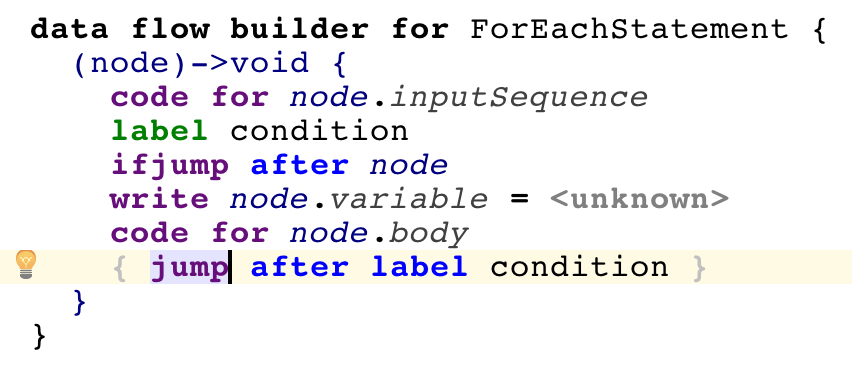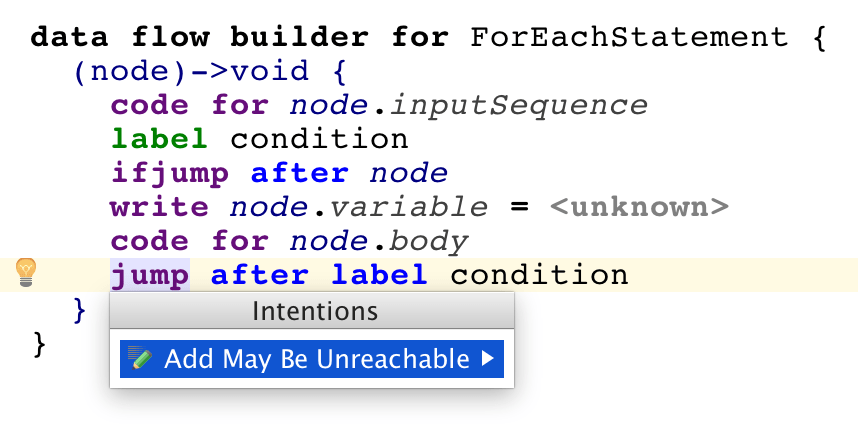Data flow
A language's data flow aspect allows you to find unreachable statements, detect unused assignments, check whether a variable might not be initialized before it's read, and so on. It also allows performing some code transformations, for example the 'extract method' refactoring.
Most users of data flow analyses aren't interested in details of its inner working, but are interested in getting the results they need. They want to know which of their statements are unreachable, and what can be read before it's initialized. In order to shield a user from the complexities of these analyses, we provide assembly-like intermediate language into which you translate your program. After translation, this intermediate presentation is analyzed and a user can find which of the statements of original language are unreachable etc.
For example here is the translation of a 'for' loop from baseLanguage:
First, we emit a label so we can jump after it. Then we perform a conditional jump after the current node. Then we emit code for node.variable. Finally, we emit code for the loop's body, and jump to the previously emitted label.
Commands of intermediate language
Here are the commands of our intermediate language:
read x - reads a variable x
write x - writes to variable x
jump before node - jumps before node
jump after node - jumps after node
jump label - jumps to label
ifjump ((before|after)node)| label - conditional jump before/after node / to label
code for node - insert code for node
ret - returns from current subroutine
May be unreachable
Some commands shouldn't be highlighted as unreachable. For example we might want to write some code like this:
If you generate data flow intermediate code for this statement, the last command: the jump after condition command will be unreachable. On the other hand, it's a legal base language statement, so we want to ignore this command during reachable statement analysis. To do so we mark it is as may be unreachable, which is indicated by curly braces around it. You can toggle this settings with the appropriate intention.
You may like to try our Dataflow cookbook, as well.
Links:
http://www.itu.dk/people/brabrand/UFPE/Data-Flow-Analysis/static.pdf - good introduction to static analyses including data flow and type systems.

